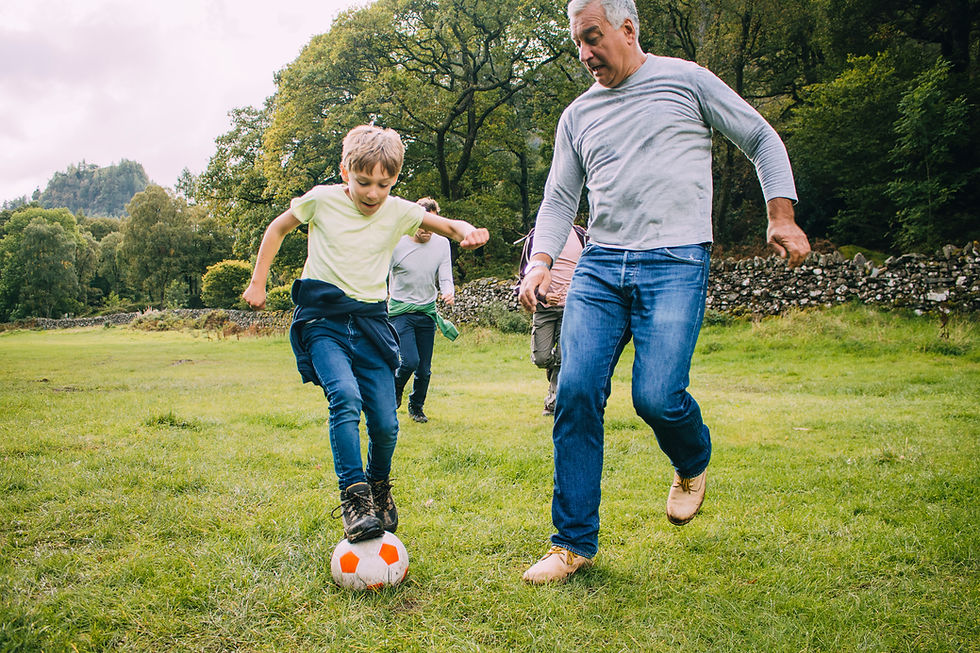Age Gracefully: Functional Fitness for 50+
- MedWords Editorial

- Jul 26
- 3 min read
Updated: Jul 29

Aging isn’t what it used to be. Today, being 50 or 60 doesn’t mean slowing down; it means moving smarter, with purpose. While “functional fitness” might sound like another fitness buzzword, it’s a game-changer for anyone looking to stay strong, agile, and independent well into their golden years.
And here’s the thing: this conversation isn’t just for those over 50. If you’re in your 20s or 30s, understanding how your body will evolve helps you (and your parents) make better decisions now. Think of this as a bridge between generations; a fitness guide that truly stands the test of time.
What Is Functional Fitness?
At its core, functional fitness is about training your body for real-life movements. That means exercises that help you do everyday tasks better, like lifting groceries, climbing stairs, getting up from the floor, or carrying your grandchild.
Unlike traditional workouts that isolate muscle groups (like bicep curls), functional fitness trains multiple muscles and joints together, mimicking natural movement patterns. Think squats, lunges, pushing, pulling, and twisting.
Why It’s a Big Deal After 50
Once you hit your 50s, your body naturally begins to lose muscle mass, flexibility, and bone density. You might feel stiffer in the morning or less steady on your feet. That’s where functional fitness shines; it improves balance, mobility, strength, and coordination all in one go.
It’s not about aesthetics or six-pack abs; it’s about longevity and quality of life. The goal is to prevent falls, maintain independence, and feel strong doing the things you love.
Bonus? It can help manage or even reduce symptoms of conditions like arthritis, diabetes, and high blood pressure.
A Typical Functional Fitness Routine (No, It’s Not Intimidating)
You don’t need fancy machines or intense boot camps. A functional workout can be as simple as:
• Bodyweight squats to strengthen legs for standing and sitting
• Step-ups to mimic climbing stairs
• Resistance band rows to improve posture and shoulder strength
• Farmer carries (holding weights and walking) for grip and core strength
• Standing balance exercises (like single-leg stands) to prevent falls
A 30-minute session, 3 to 4 times a week, can make a huge difference. It’s about consistency, not intensity.
The Mind-Body Bonus
Functional fitness isn’t just physical; it’s emotional. For people over 50, staying active boosts confidence, reduces anxiety, and improves mood. It keeps the brain engaged and the spirit sharp.
And for younger readers: helping your parents or grandparents explore this kind of movement can build connection, shared goals, and even make for great bonding time.
Getting Started Safely
Whether you’re easing into it yourself or encouraging someone older, here are a few tips:
• Start slow: Begin with bodyweight exercises and build up gradually.
• Warm-up and cool down: Mobility work is key, especially for aging joints.
• Focus on form, not reps: Quality beats quantity.
• Work with a trainer: If possible, especially one who understands aging bodies.
• Listen to your body: Soreness is okay, but pain is a red flag.
Also, walking counts. Dancing counts. Even gardening counts. Functional movement is everywhere.
Functional Fitness Is the Future
Here’s what’s cool: even major athletic training programs today are focusing more on function over aesthetics. That tells us something; this approach isn’t just for older adults; it’s smart for everyone.
So, whether you’re 25 or 55, it’s time to stop obsessing over trends and start focusing on how you move, feel, and live. Strength and grace can go hand-in-hand, and functional fitness might just be the most graceful way to age.
Comments